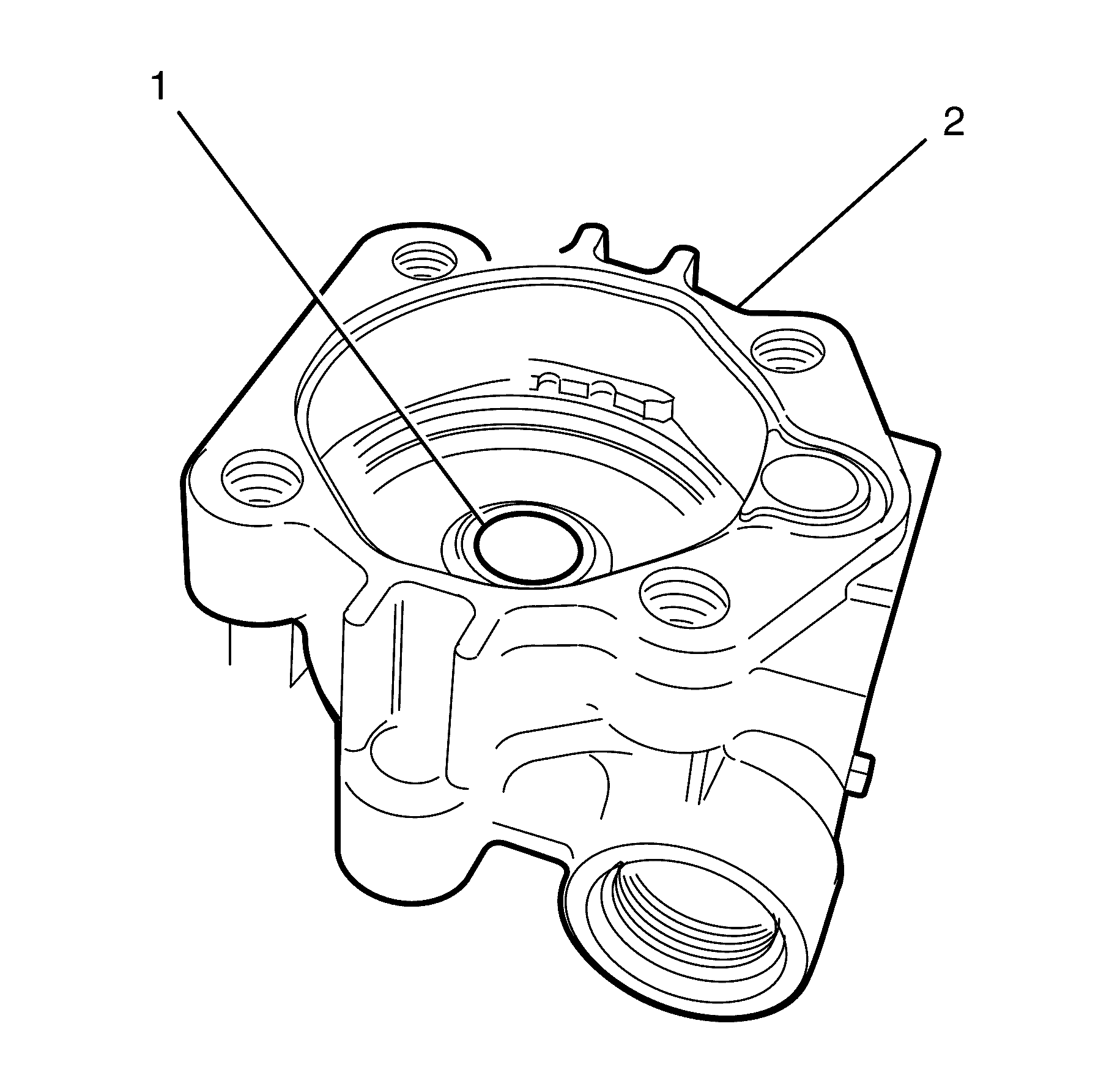- Remove the power steering pump. Refer to Power Steering Pump Replacement .
- Remove the power steering pump pulley. Refer to Power Steering Pump Pulley Replacement .
- Drain any power steering fluid from the power steering pump.
- Suitably support the power steering pump in a vice.
- Remove the power steering pump inlet pipe to power steering pump housing retaining bolt (3).
- Remove the power steering pump inlet pipe (2) and O-ring (1).
- Remove the high pressure outlet fitting (3) from the power steering pump housing (1).
- Remove the droop flow control valve assembly (4) and spring (2) from the pump housing (1).
- Remove the two high pressure outlet fitting O-rings (1).
- Remove the rear end plate to power steering pump housing retaining bolts (4).
- Remove the rear end plate (3) from the power steering pump housing (1).
- Remove the rear end plate seal (2).
- Remove the power steering pump ring (2) from the power steering pump housing (1).
- Remove the vane blades (1), ten places, from the power steering pump rotor (3).
- Remove the full circumference retainer ring (4) from the shaft (2), using a suitable set of circlip pliers.
- Remove the rotor (5), thrust washer (4) and the O-rings (3) and (2) from the power steering pump housing (1).
- Remove the power steering pump drive shaft (2) from the power steering pump housing (1).
- Remove the power steering pump drive shaft seal (1) from the power steering pump housing (2).
- Remove the rear end plate bush (1) from the end plate (2), by either:
- If required, remove the power steering pump housing bush (1) from the power steering pump housing (2) using a suitable drift struck evenly on both sides of the power steering pump housing bush (1).
Caution: Refer to Safety Glasses Caution in the Preface section.
Caution: Refer to Vehicle Lifting Caution in the Preface section.

Important: The power steering pump inlet pipe (2) can be installed in two directions. Observing the orientation of the power steering pump inlet pipe with reference to the original position will minimise the potential of incorrect installation.
Important: The O-ring (1) is a single use part. It must be discarded after removal.
Discard the O-ring.
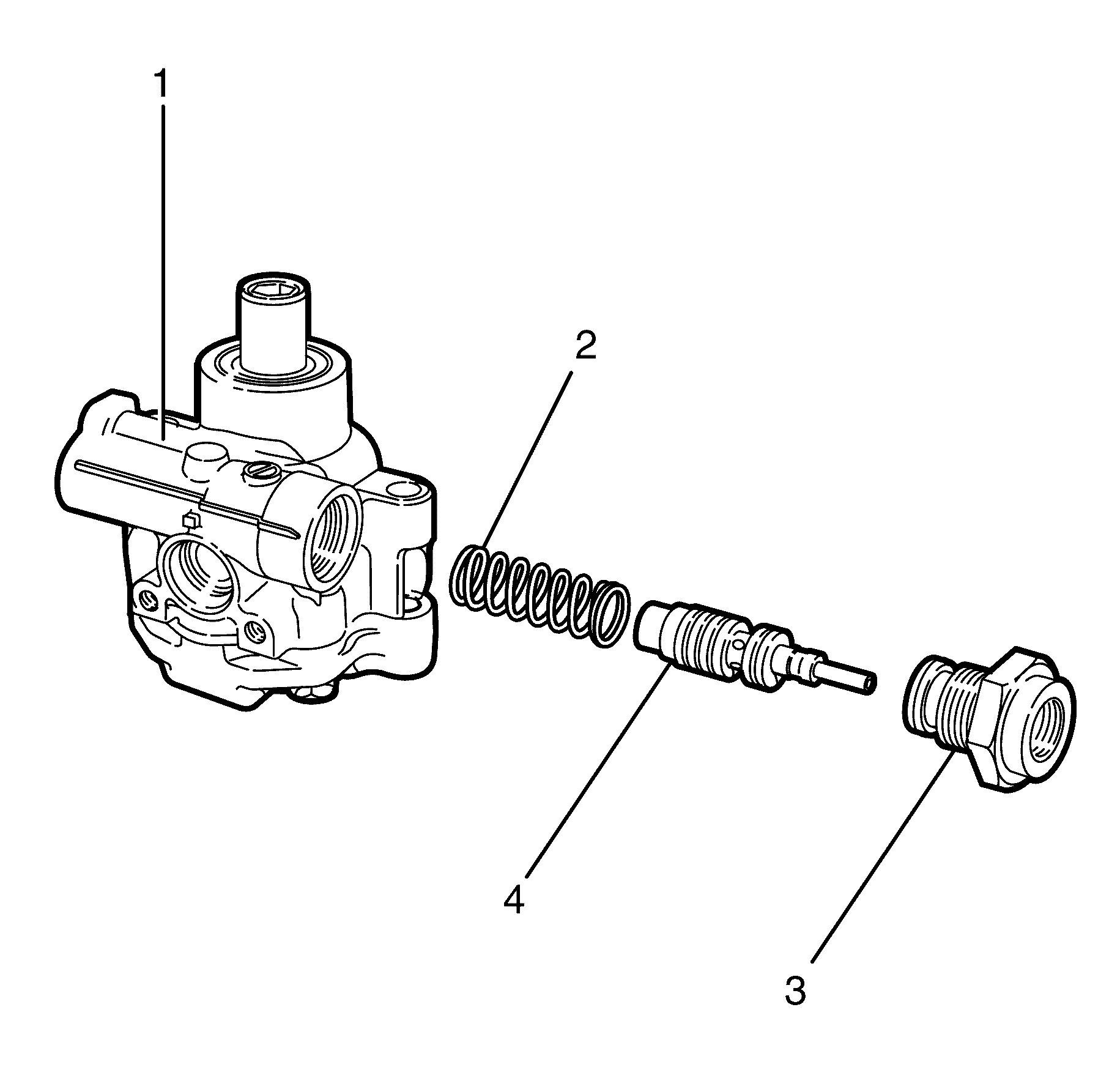
Important: For droop flow control valve type power steering pumps the spring loaded flow control valve will thrust the outlet fitting from the power steering pump housing.
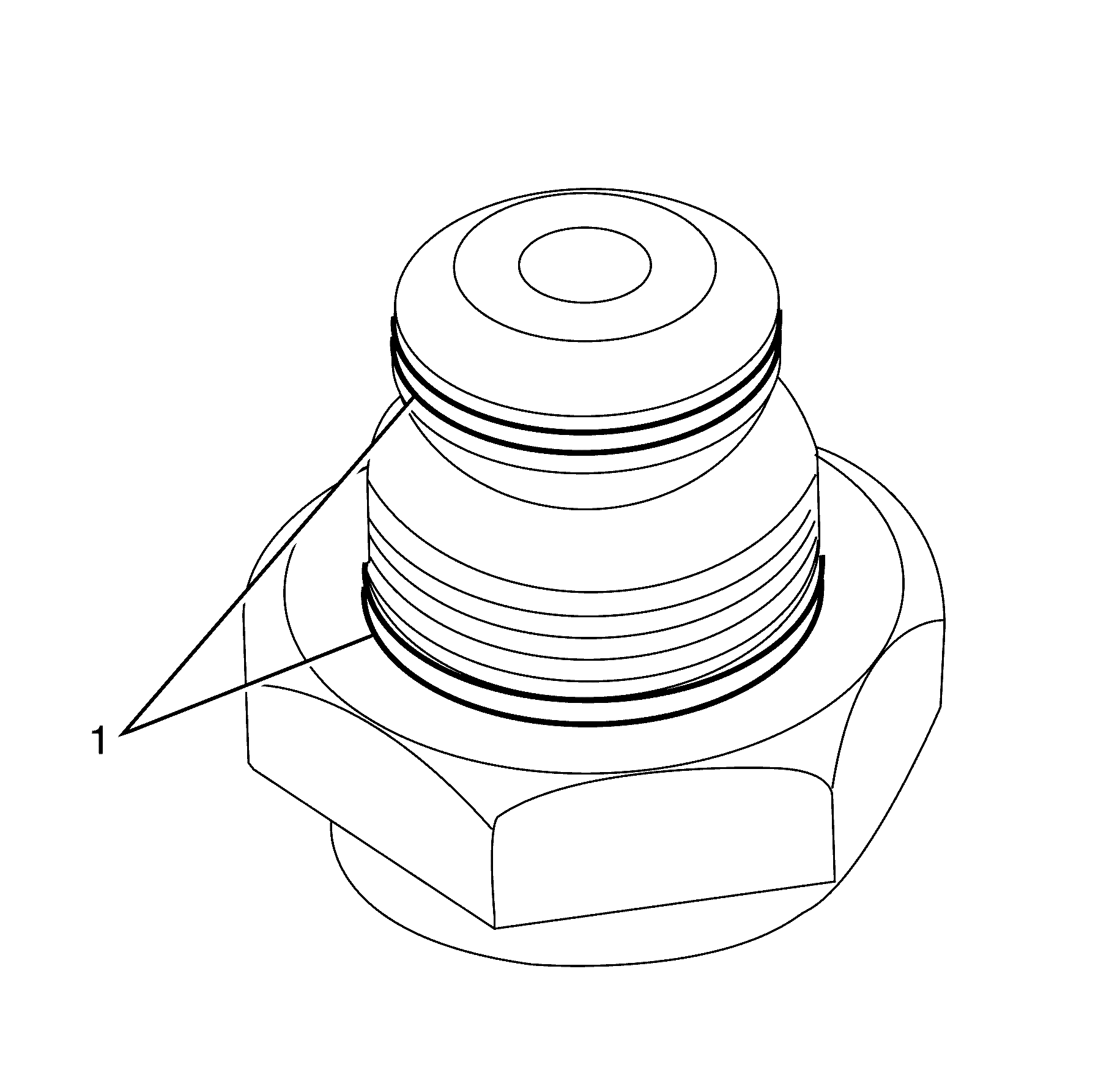
Important: The O-rings (1) are single use parts. They must be discarded after removal.
Discard the O-rings.
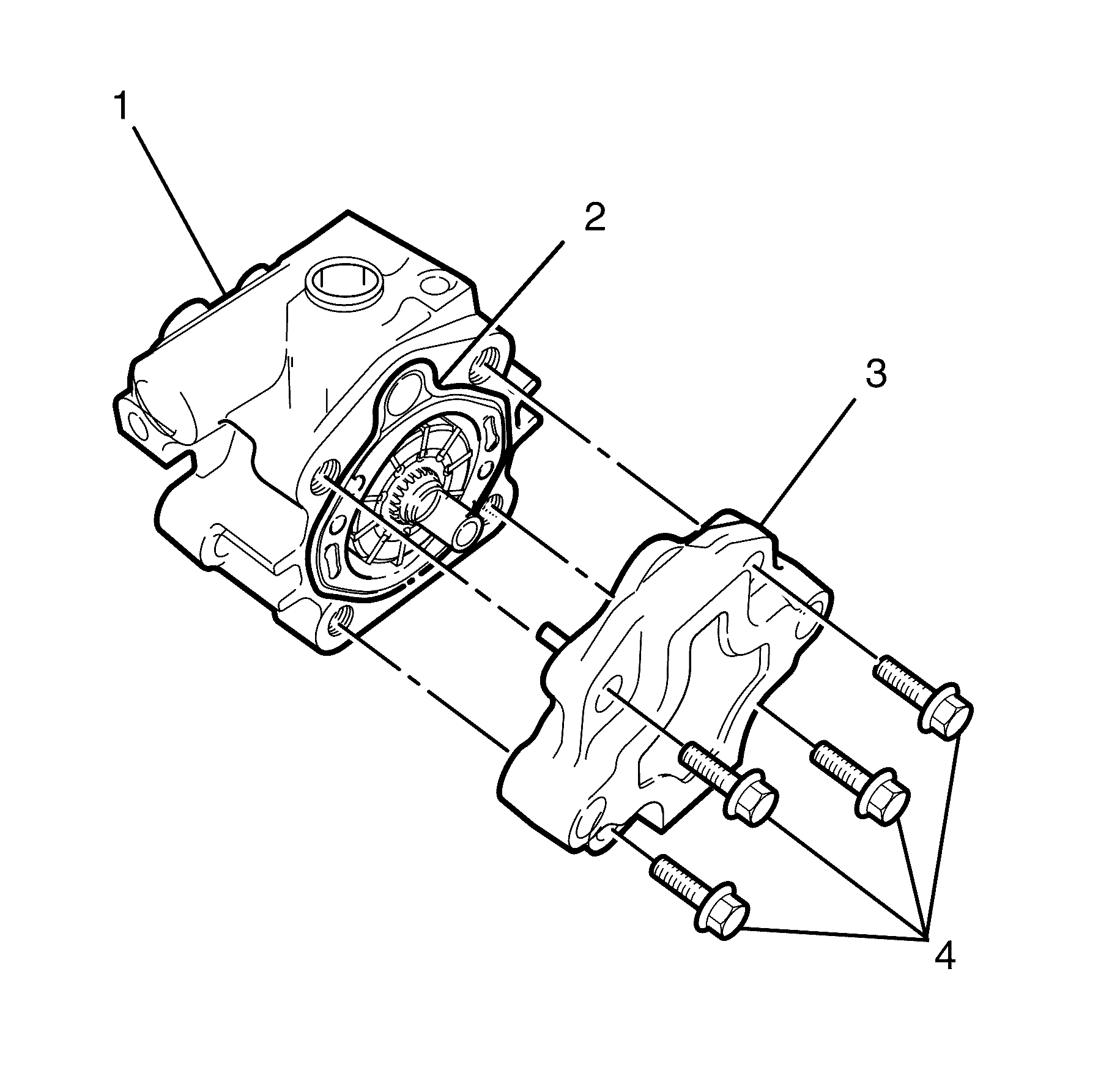
Important: The rear end plate seal (2) is a single use part. It must be discarded after removal.
Discard the seal.
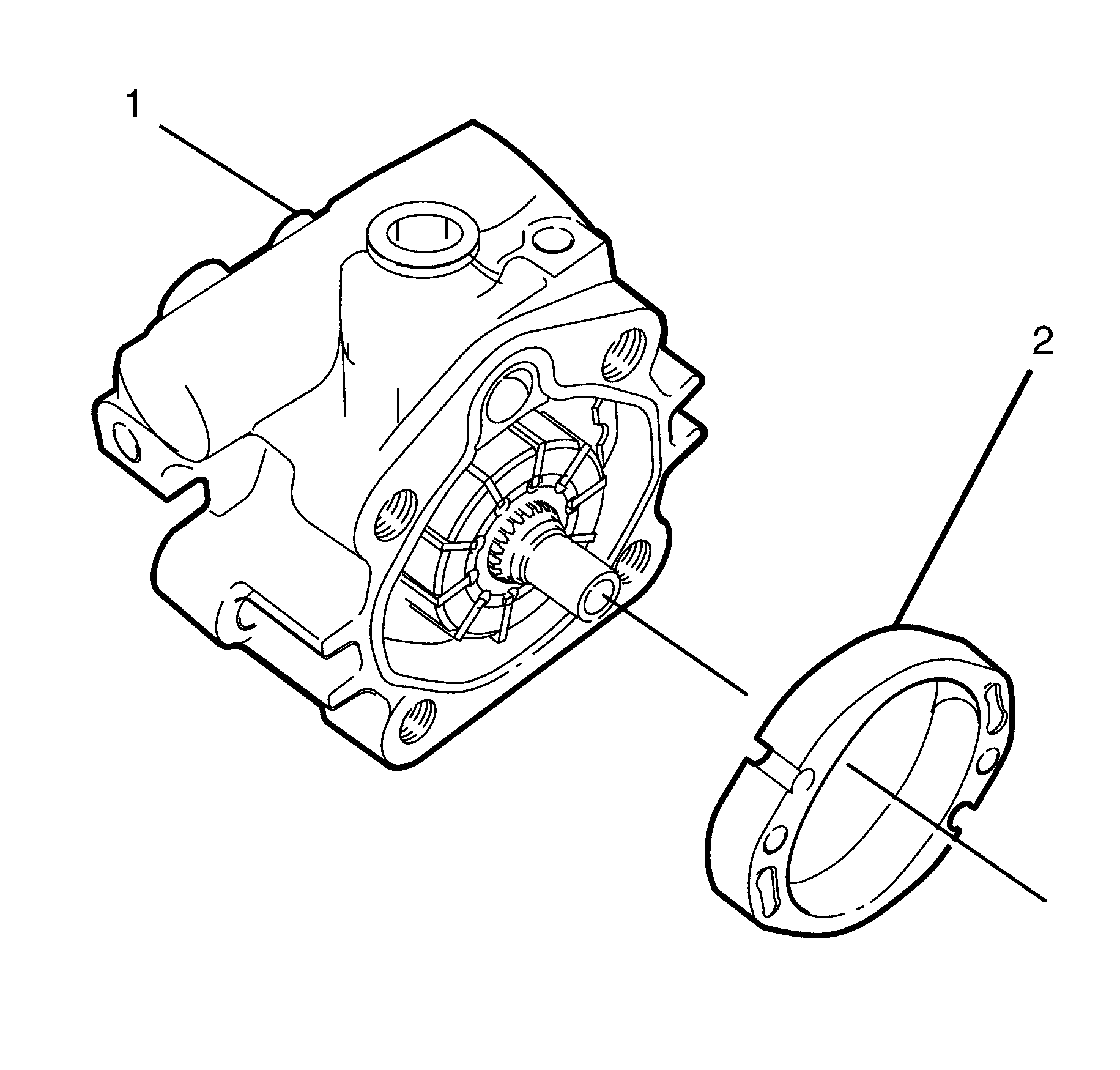
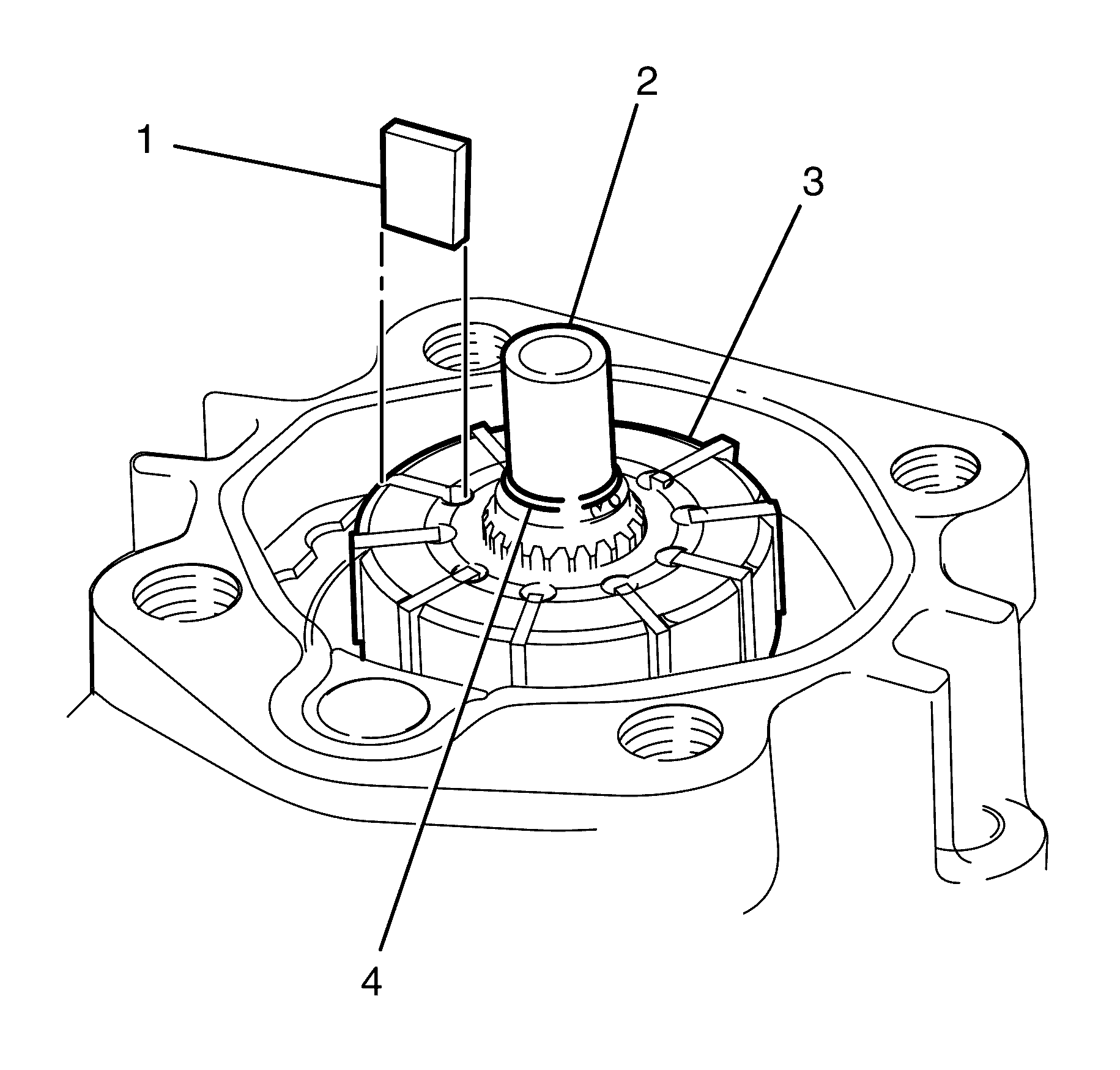
Important: Do not damage the power steering pump rotor surface or power steering pump housing surface when removing the vane blades (1).
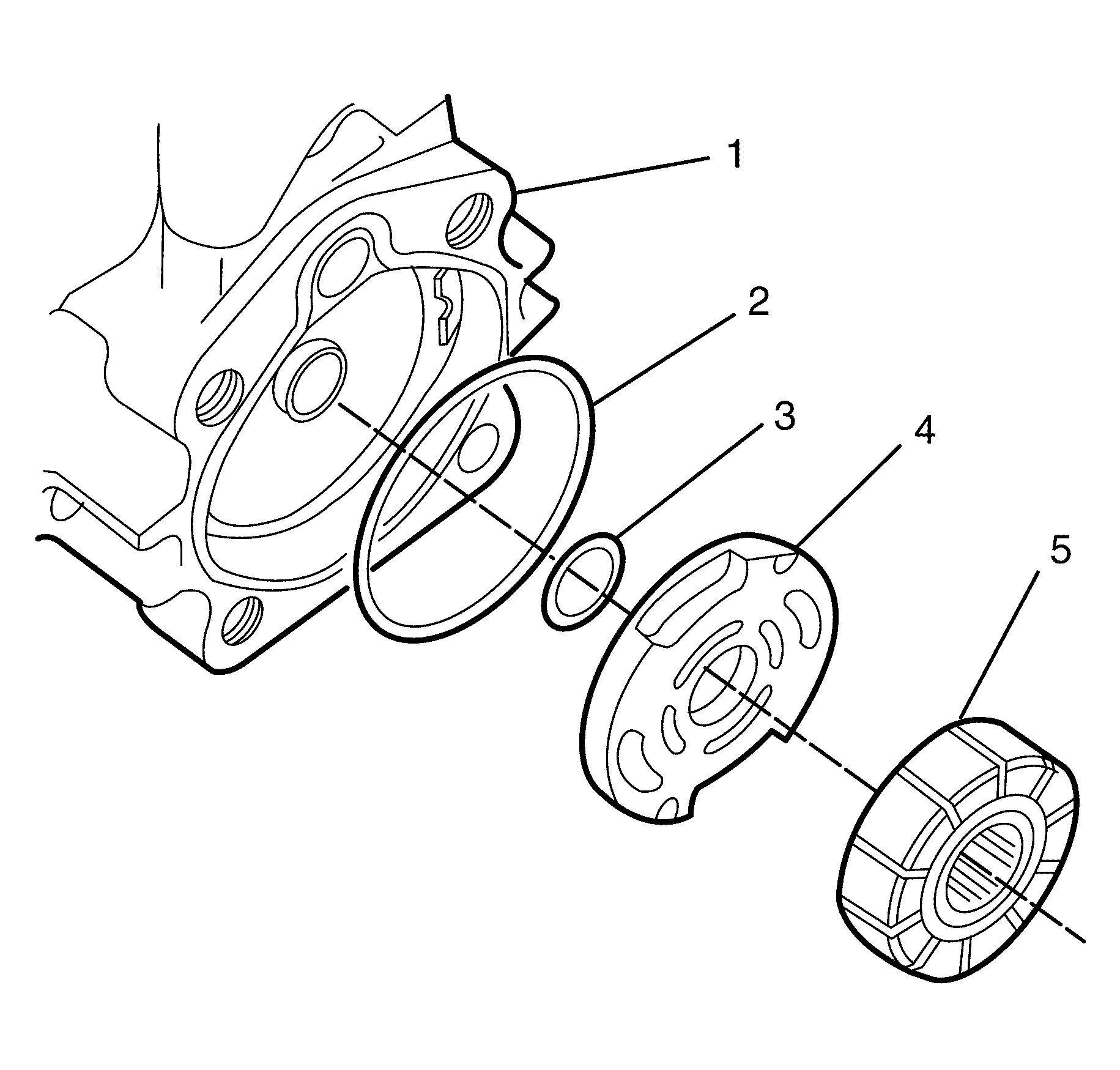
Important: The O-rings (2, 3) are single use parts. They must be discarded after removal.
Discard the O-rings.
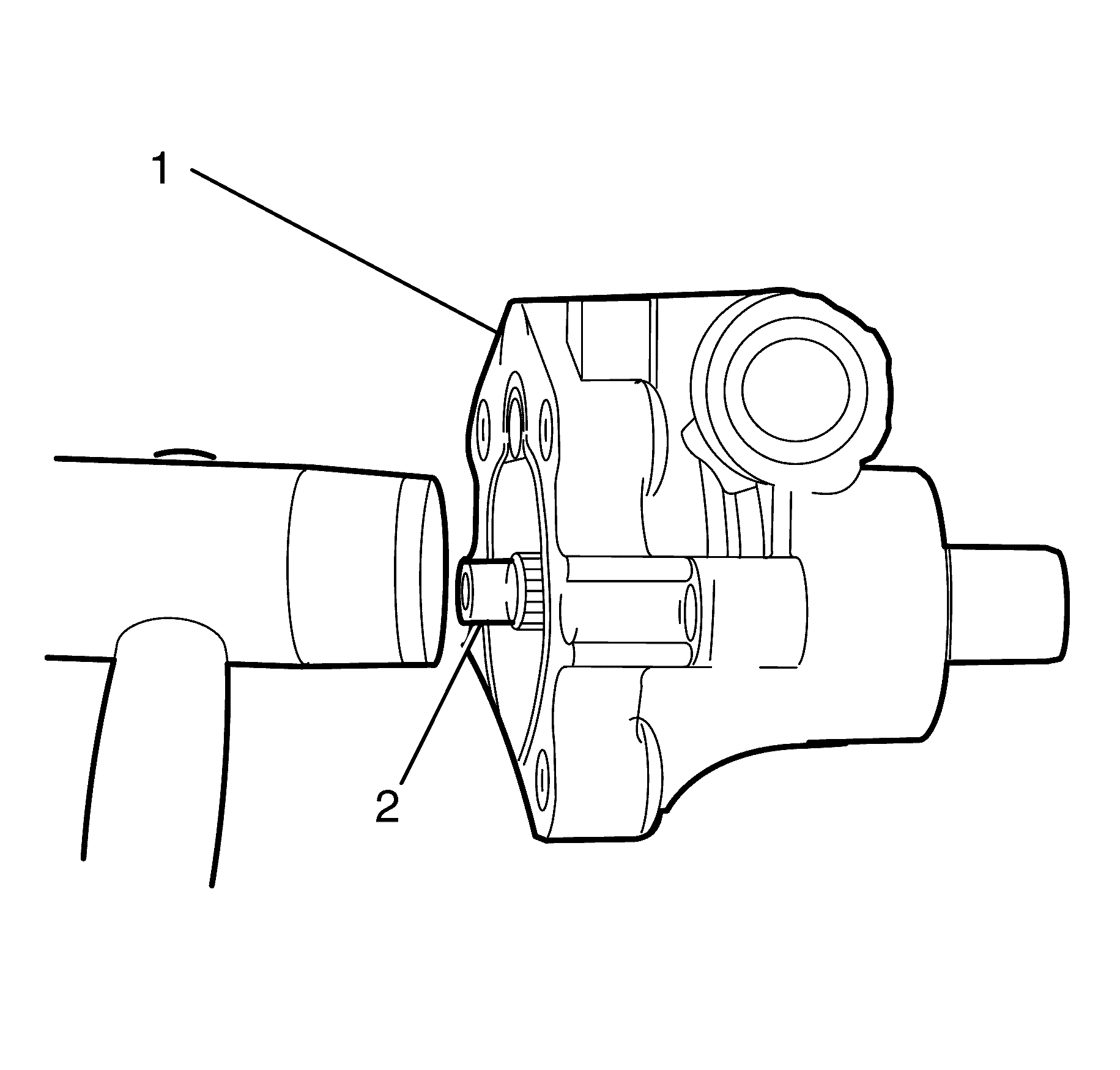
Important: If required, use a suitable soft faced hammer and tap the power steering pump drive shaft very lightly until it is removed.
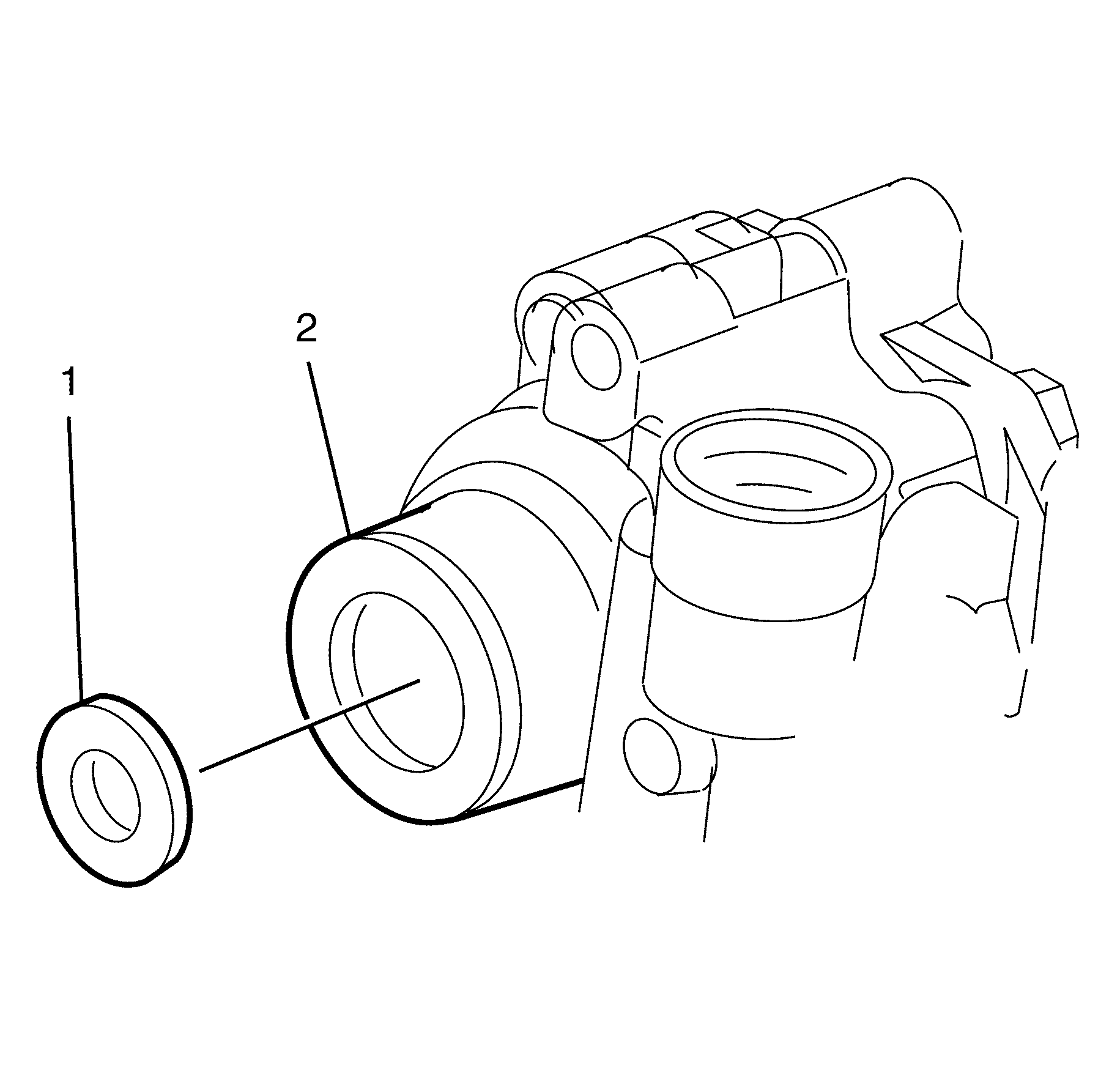
Important: Do not damage the power steering pump housing bore when removing the power steering pump drive shaft seal (1).
Discard the seal.
Notice: Refer to General Repair Instructions in the Preface section.
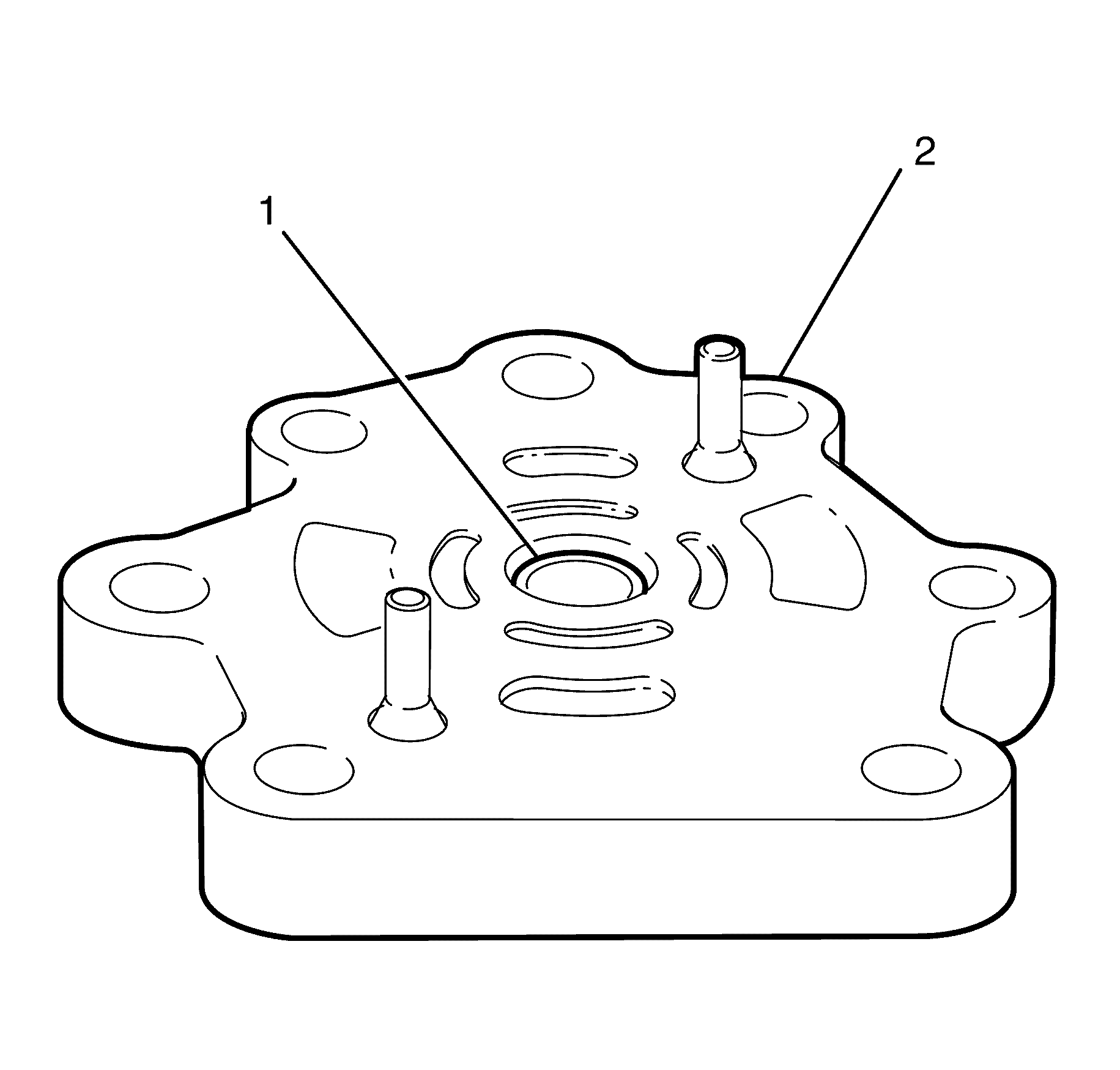
| • | Packing the rear end plate bush cavity with grease, inserting the power steering pump shaft and driving the rear end plate bush (1) out using a soft faced hammer. |
Notice: Refer to General Repair Instructions in the Preface section.
| • | Drill the rear end plate bush (1) out to a depth of 12 mm from the surface of the rear end plate (2) using an 11 mm drill bit and pedestal drill, then remove the remainder of the rear end plate bush (1). |
